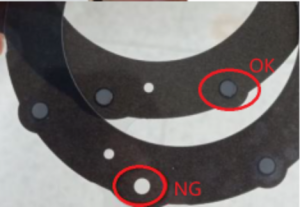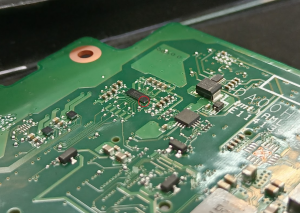Allion Labs
In the previous article, we gave an overview of the IPQC inspection techniques and standard procedures. Now, we will further introduce the QC service of Allion using IPQC. Allion has detailed inspection regulations and plans to ensure that the product quality, amount, packaging and appearance meet the customers’ requirements, to control product quality from the beginning of production to shipping, to improve the reliability of production quality, and to effectively improve the control on product quality.
Allion service features
Provision and assessment of solutions: Providing real-time feedback analysis, suggestions and assessments with regard to the inspection process and results, accurately recording the inspection process, thoroughly checking for mistakes in the process, and providing viable solutions.
Comprehensive testing and planning: Optimizing the blind spots in the inspection process and improving inspection plans through comprehensive testing. Achieving quality control for batches through inspection on the first and last boxes of products after the testing is completed.
Statistical quality database: Conducting quantitative analysis on past inspections and simultaneously updating and logging issues discovered in production and in markets in order to provide customers with preventive measures and suggestions.
Systematic quality control: By logging past IPQC data, providing customers with feedback and suggestions in weekly or monthly reports, and logging customer complaint ratios, quality control is conducted periodically, quantitatively and systematically.
Here we provide in-depth understanding of Allion services through actual cases of 4 common issues.
Issue 1: Missing page numbers in product descriptions
Sampling Rate/Fail Rate:
In the sampling process, 1 piece of the product descriptions was found to have page numbers missing. Full inspection on 100% of the products was implemented, and all of the product descriptions were found to have page numbers missing. The fail rate was 100%.

Value:
- This type of defect is difficult to spot in the existing production line SOP. The service assisted factories in updating the key inspections in SOPs to prevent substandard products from reaching the market.
- The service assisted factories to spot errors and non-compliant operating methods in the production process and significantly reduced the fail rate to prevent customer complaints.
Root Cause:
- The production line SOP did not list page numbers as one of the inspection items, so inspectors could not spot the defect.
- Defects in the diagrams of the supplier of the product descriptions
Solution:
- Adding pictures of the defect to the final inspection SOP as an emphasis of inspection in the OQC stage.
- Re-designing the diagrams of the supplier of the product descriptions to include the missing page numbers.
Issue 2: Mesh Pressure Sensitive Adhesive (PSA) sensor gel pad defect
Sampling Rate/Fail Rate:
In the sampling process, 2 pieces of Mesh PSA were found to be defected. Full inspection on 100% of the products was implemented, and 30 pcs out of the 400 pieces of the batch were found to be defected. The fail rate was 7.5%.

Value:
- The service assisted the factories to update the emphases for inspection in the SOP to prevent defected products from reaching the market.
- The service assisted factories to spot errors and non-compliant operating methods in the production process and significantly reduced the fail rate to prevent customer complaints.
Root Cause:
- Quality issues in the raw materials.
- The sampling percentage of IQC was insufficient to spot the defect.
Solution:
- Enhancing inspections on the raw materials to prevent low-quality materials from entering the next step in the production process.
- Filtering the existing inventory in the factory.
Issue 3: The system could not be turned on due to defects in the power supply
This was one of the more serious issues because consumers could not use the products at all. This significantly increased the customer complaint and service costs.
Sampling Rate/Fail Rate:
In the sampling process, 1 piece of the power supplies was found to be defected. Full inspection on 100% of the products was implemented, and no defected product was found in the 182 units of the batch. The fail rate was 0.55%.
Value:
- Although the fail rate was low, the defect was relatively serious. The defect was difficult to detect in the existing product line SOP. The service assisted the factories to update the emphases for inspection in the SOP to prevent defected products from reaching the market.
Root Cause:
Electrically induced physical damage (EPID)
*Head damage to the electronic components when exposed to current or voltage exceeding the regulated limit
Solution:
- Cross-examination to verify the defect in the power supply and double-checking with the QC staff of the vendor.
- Filtering the existing inventory in the factory.
Issue 4: Headphone jack defected
Sampling Rate/Fail Rate:
In the sampling process, 1 piece of the headphone jacks was found to be defected. The fail rate of the batch was 0.09%.

Value:
- The service assisted the factories to update the emphases for inspection in the SOP to prevent defected products from reaching the market.
- The service assisted factories to spot errors and non-compliant operating methods in the production process and significantly reduced the fail rate to prevent customer complaints.
Root Cause:
Indentation marks were found on the MB components. Operators are suspected to have damaged the MB components in assembly.
Solution:
- Enhancing the training for assembly line operators to prevent defected products from reaching the market.
- Adding the item as an emphasis for inspection in the SOP to prevent defected products from reaching the market.
The 4 actual cases above are only a few examples of the Allion service overview and description. We utilize our four main service advantages—namely provision and assessment of solutions, comprehensive testing and planning, statistical quality database, and systematic quality control—to optimize customers’ product quality. In addition, Allion also provides various verification services to assist our customers in controlling product quality in the shortest time possible through the design requirements and communication services that meet our customers’ expectations.
Take the Next Step
If you want to improve your product in the IPQC process, the Allion team is at your service! Learn more about our quality control services or email us directly at service@allion.com.

































